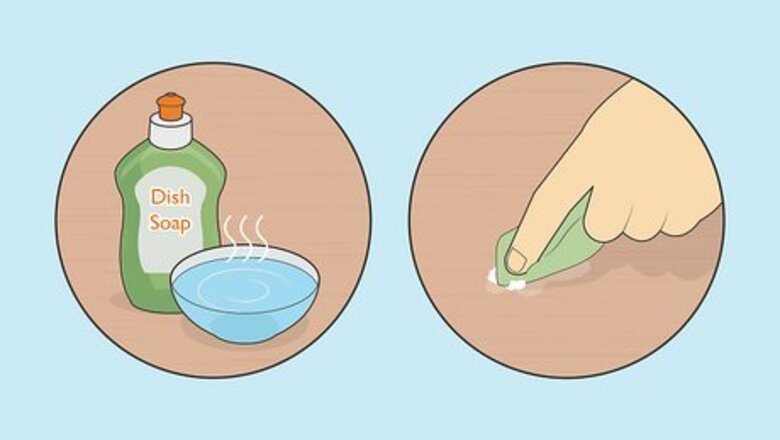
views
Dish soap suds

Use only the foamy suds so you don’t rewet the stain. Mix some hot water with a few drops of dish soap in a large bowl until you have a lot of suds. Dip the corner of a soft cloth into the bubbles, making sure not to get the cloth wet. Gently rub the foam into the stain until it lifts up. Then, just wipe the soap off with another damp towel. Make the wood shine again by applying a wood polish right after cleaning it.
Petroleum jelly

Working petroleum jelly into the surface could hide minor rings or stains. Scoop out a fingertip-sized amount of petroleum jelly onto a clean soft cloth. Work the petroleum jelly into the stain using circular movements. If the stain doesn’t disappear after you rub it in completely, try applying a little more and leaving it for about an hour before rubbing it in. The petroleum jelly should absorb into the wood, but wipe away any excess you still see with a soft cloth.
Mayonnaise
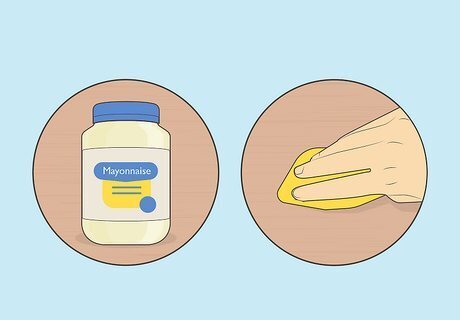
Mayonnaise works best on newer stains that are only a few days old. You can use any mayonnaise you have in your fridge. Rub some mayo onto the stain with a rag. Leave the mayo on the wood overnight, but be sure to reapply more if it dries out. The next day, wipe the mayonnaise and stain away with a clean cloth. The oils from the mayonnaise will absorb into the wood and remove the moisture. You can try adding wood ashes to the mayonnaise to make it slightly abrasive to help the oils penetrate deeper.
Hydrogen peroxide and vinegar
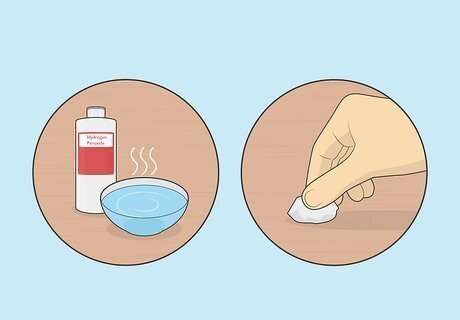
Hydrogen peroxide and vinegar work best on tough, darker stains. Combine 1 tablespoon (15 ml) of 3% hydrogen peroxide with 1 cup (240 ml) of warm water in a bowl. Wet a soft cloth or cotton ball into the solution and dab it onto the stain until it’s completely covered. After that, dab the stain again lightly with some white vinegar for some added cleaning power. Wipe the solution off of the wood with a damp clean cloth to completely remove the stain.
Baking soda and vinegar
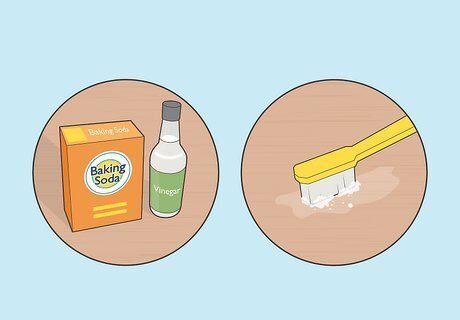
The fizzing reaction between baking soda and vinegar loosens stains. Cover the entire stain with a thin layer of baking soda and rub it in with a dry cloth. Then, dip a soft-bristled toothbrush in white vinegar and gently scrub the baking soda. When the mixture stops bubbling, wipe it off with a dry cloth. You can do this as many times as you need to completely remove the stains. Baking soda and vinegar work especially well for untreated wood.
Toothpaste
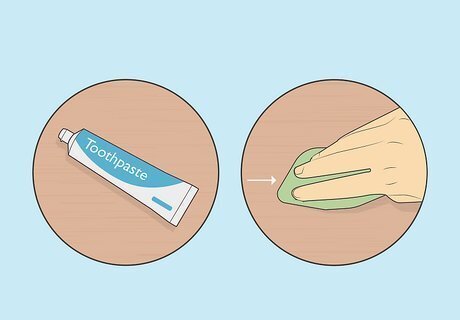
Stick with a white, non-gel toothpaste for the best clean. Squeeze some of the toothpaste onto the corner of a soft cloth and slowly rub it onto the stain in the same direction as the wood grain. Gently scrub the toothpaste onto the stain for about a minute to work the stain out from your wood. Toothpaste has a slight abrasive that helps scrape the stain away, but it could damage the wood’s finish.
Steel wool and lemon oil
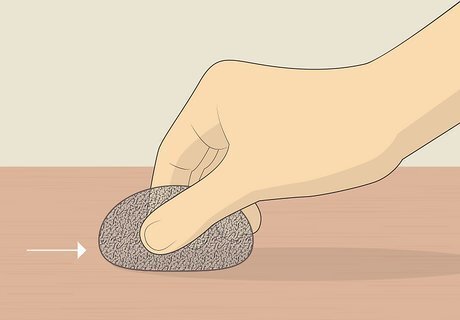
Use the finest steel wool you can find to prevent damage. Apply a few drops of lemon oil to the stain, and gently rub it into the stain with the steel wool. Use light pressure and work in the same direction as the wood grain so any scratches from the steel wool blend in easier. Only use steel wool on the stained area of your wood so you don’t accidentally damage another section.
Salt and lemon juice

Lemon juice and salt work best for lighter stains. Sprinkle salt liberally over the stain until it’s completely covered. Cut a lemon in half and squeeze the juice out onto the salt to form a paste. Scrub the salt paste deeper into the stain with the cut side of the lemon. Let the paste dry overnight before rinsing it off with a damp cloth. Salt and lemon make a slight abrasive that could clear the stains from your wood.
Iron

The heat from the iron draws moisture out from the wood. If your iron has water in it, be sure to empty it before using it on wood. Lay a cotton napkin or a T-shirt over the stain to protect your wood. Turn the iron to the lowest setting and rub it over the stain for a few seconds. Lift up the napkin or shirt to check if the stain disappeared. If it hasn’t, try rubbing the iron over the stain for a few more seconds. Irons work best for stains that are only a few days old.
Hair dryer
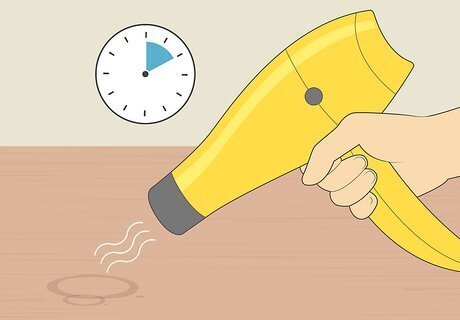
Dry out the moisture in the stain on the lowest heat setting. This works best on newer stains even after the milk has dried on the wood’s surface. Wave the hair dryer over the stain so you don’t damage or overheat the wood. After about 10 minutes, the stain should dry up. The white stain is actually moisture caught between the wood and the finish. When you apply heat, the moisture evaporates and escapes from the wood.
Commercial wood cleaner
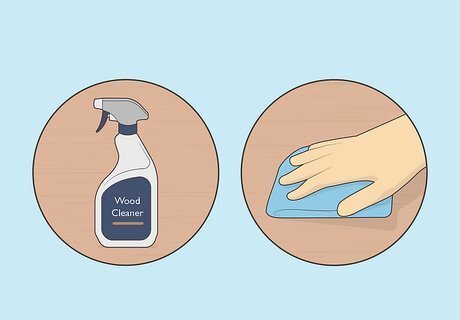
Commercial cleaners restore shine, but can remove the wood finish. You can use any commercial wood cleaner from a big box store. Wet a cleaning cloth with the cleaner and gently rub it into the stain so you don’t completely remove the finish. Immediately dry the cleaner off with another dry cloth to remove the stain. Even though the cleaner removes some of the finish, you can easily refinish it by applying wax or sealer to the wood.















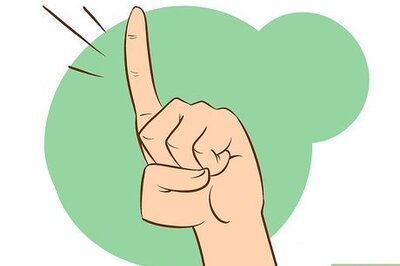
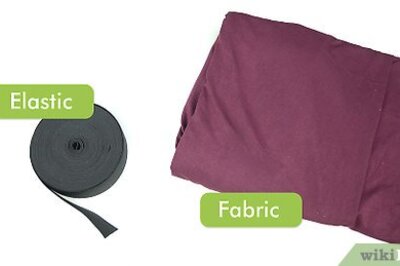
Comments
0 comment